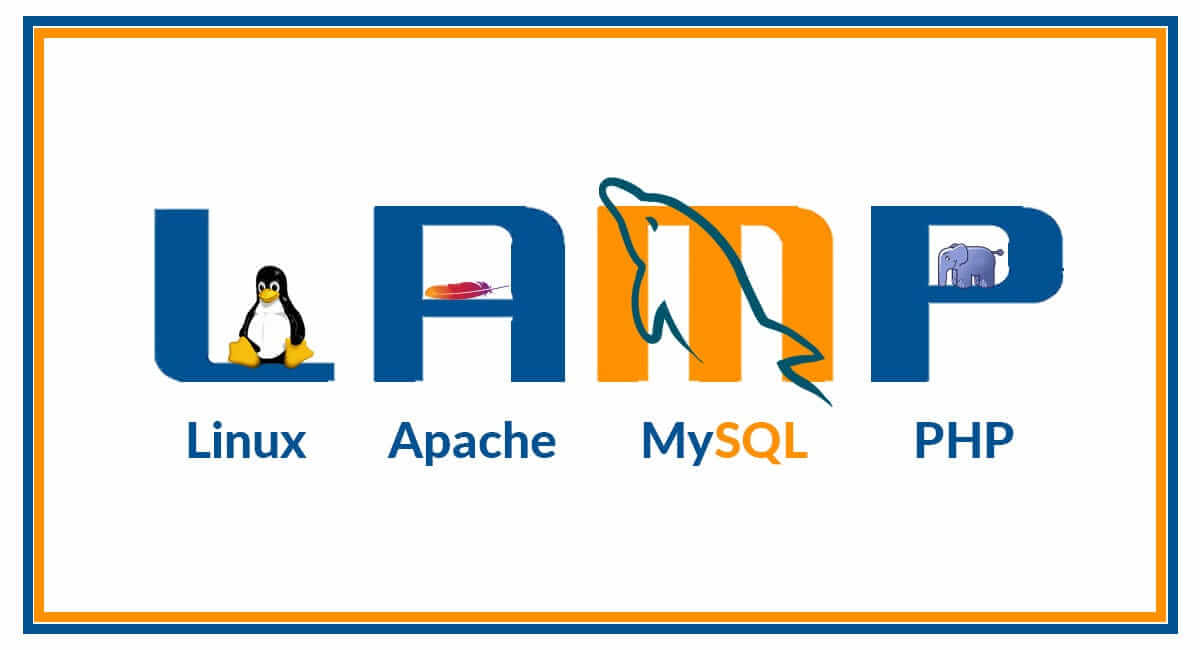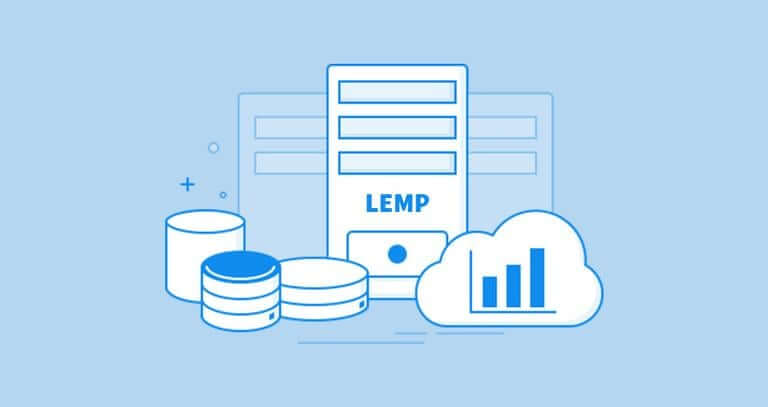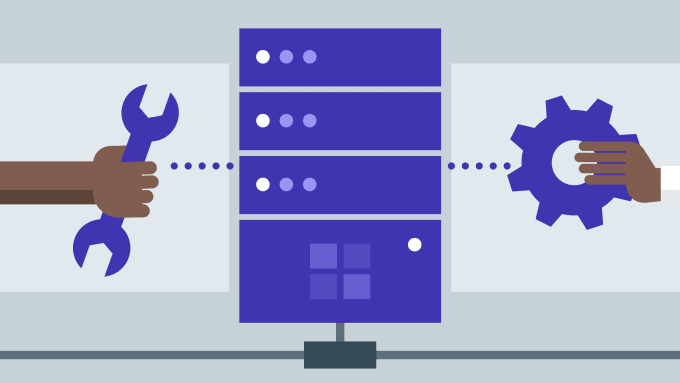Everything You Need To Know About LEMP Stack

The LEMP stack is a well-known open-source software solution for web development and server management. Countless websites depend on these software components to run proficiently and effectively.
Linux acts as the underlying operating system, establishing a reliable foundation for the system. Nginx, often pronounced as "engine-x," takes on the role of the primary web server, showcasing exceptional prowess in efficiently managing concurrent connections with high performance. Managing data storage and retrieval efficiently, MySQL is a relational database management system. Additionally, PHP, serving as the server-side scripting language, empowers the creation of dynamic content.
These factors offer an environment for hosting and running web applications that are fast, reliable, and flexible. In this article, we will look at the different parts of the LEMP stack separately in terms of their role in interaction with the benefits it has brought to modern sites making them.
How Does LEMP Stack Work?
The LEMP stack is a comprehensive web development platform with synergistic integration of all four constituents to serve dynamic web pages and guarantee high performance. Let's examine each element's unique position to understand how the LEMP stack works.
Linux (L)
As the foundation, Linux provides a stable and secure operating system for the LEMP stack. Its open-source nature allows for customization and optimization, ensuring compatibility with the other components. Linux manages system resources efficiently, enhancing the overall reliability and security of the Apache web server environment.
Nginx (E)
Nginx, functioning as the default LEMP stack's default web server, excels at handling concurrent connections and managing incoming traffic. Its event-driven architecture and efficient resource utilization make it a high-performance alternative to the traditional Apache web server.
Nginx acts as a reverse proxy, forwarding requests to access the server to appropriate backend components while efficiently managing static browser content. This results in faster response times and improved server scalability.
MySQL (M)
MySQL's relational database management system is in charge of keeping and getting data. It is appropriate for various applications due to its capacity to manage big datasets and ACID-compliant transactions, guaranteeing data integrity.
MySQL and PHP interface easily, enabling dynamic web pages to communicate with the database and generate content in response to user input or other dynamic elements in the test database.
PHP (P)
The server-side scripting language PHP is responsible for creating web pages and handling dynamic content. It can retrieve and change data from the MySQL database, which makes it possible to create dynamic websites and interactive online applications.
PHP runs on the server, ensuring that the processing load of popular web applications is shifted a server block away from the browser client, resulting in faster and more efficient web page rendering.
The LEMP stack's synergy lies in the collaborative efforts of Linux, Nginx, MySQL, and PHP. Linux provides a stable foundation, Nginx efficiently manages web traffic, MySQL handles data storage and retrieval, and PHP processes dynamic content. This integrated approach fosters a high-performance, scalable, and reliable environment for web development.
Choosing a reliable and performance-driven VPS provider is essential when hosting your LEMP stack. VPSServer stands out as an excellent option that caters to the complexities of LEMP-based applications.
With a focus on delivering high-performance virtual private servers, VPSServer aligns seamlessly with the demands of the LEMP stack, ensuring a robust hosting environment for your web applications.

Reasons Why LEMP Stack is Popular in Web Development
Several compelling reasons contribute to the widespread popularity of the LEMP stack in web development, drawing the preference of developers and system administrators globally.
Performance Optimization
The LEMP stack is renowned for its exceptional efficiency and effectiveness. While serving as the web server, Nginx manages numerous connections simultaneously while utilizing minimal RAM. This capability results in heightened server performance and faster response times, making it an ideal choice for websites and applications experiencing substantial traffic.
Scalability
Designed with a modular structure and efficient resource utilization, the LEMP stack facilitates easy scalability. System administrators can add servers to balance the load, ensuring smooth operations even when web traffic increases. This scalability is especially beneficial for businesses that are growing fast.
Open Source and Cost-Effective
LEMP is fully open-source and requires no license costs, making it particularly affordable. Because of this functionality, it's a wonderful choice for small businesses, startups, and budget-conscious developers. Additionally, open-source software encourages continued innovation, community collaboration, and cost savings.
Security Features
Linux, the operating system that underpins the LEMP stack, has strong security features. Nginx also enhances security by efficiently dealing with and preventing common web vulnerabilities. Frequent updates and community-driven security improvements strengthen the LEMP stack's protection against cyber attacks.
Flexibility and Customization
LEMP is versatile and flexible; developers can customize the stack to meet their unique needs. Users can adjust the stack to match the unique requirements of their projects, whether they are complex e-commerce platforms or simple blogs. This flexibility comes in handy when managing different web development situations.
Support for Modern Web Technologies
The LEMP stack seamlessly supports a host of modern web technologies and frameworks. Thanks to the combined powers of PHP and Nginx, it offers a reliable framework for hosting many content management systems (CMS), including WordPress, Joomla, and Drupal. It also supports well-known web frameworks like Symfony and Laravel.
The LEMP stack remains a versatile and dependable choice in web development, effectively powering a broad spectrum of online applications.

Advantages of LEMP
The LEMP (linux nginx mysql php) offers many advantages. It is a popular alternative and favored choice for web developers and system administrators seeking a robust and efficient environment for hosting web applications. Here are the key advantages of the LEMP stack:
Community Support
The LEMP stack benefits from a large and active community. Strong community support makes it easier for users to solve problems and share information by giving them access to forums, tutorials, and documentation. This active community ensures users are informed about best practices and get help when needed.
Ease of Configuration and Management
LEMP's components are known for their ease of configuration and management. Nginx's simple and clear configuration file syntax, coupled with tools like PHP-FPM for configuration file managing PHP processes, streamlines the setup and maintenance of the entire stack.
Reliability
Ensuring the reliability and stability of the LEMP stack depends on the choice of operating system, with Linux standing out as a p factor. The synergy of Linux, the resilient MySQL database, and the well-structured Nginx web server contributes to the LEMP stack's ability to minimize downtime, providing a dependable hosting environment for web applications.
Extensive Documentation
An integral aspect of the LEMP stack is extensive and well-maintained documentation availability. It makes learning more accessible for novices and helps more experienced developers fix problems and maximize efficiency. This wealth of resources improves both development and operations as a whole.
These factors collectively make LEMP a versatile and reliable solution for various web development projects.

Disadvantages of LEMP Stack
While the LEMP stack has numerous advantages, it is essential to weigh potential downsides and challenges that may arise during its utilization. Here are some drawbacks associated with the LEMP stack:
Learning Curve
Setting up and managing the LEMP stack can be difficult for novices. Learning the details of each component, especially for users who lack basic knowledge of Linux commands and server administration, can take a lot of time.
Limited Windows Support
LEMP is primarily designed for Linux environments, and while it is possible to run parts of the stack on Windows, it is not as straightforward. This can be a limitation for developers or organizations with a preference for or reliance on Windows-based systems.
Complex Configuration Files
Nginx, while powerful, uses complex configuration files. The various configuration files and syntax may be less intuitive for those accustomed to other popular web applications and servers like Apache. This complexity can lead to errors during configuration, potentially affecting the performance and security of the web server.
MySQL Single Point of Failure
In configurations where a single MySQL server is used, it can become a single point of failure. If the database server experiences issues or goes down, it can disrupt the server running the entire application. Implementing high-availability solutions or database clustering can mitigate this risk but adds complexity.
Less Familiarity with PHP in Enterprise Environments
In enterprise environments, some organizations prefer alternatives to PHP for large-scale applications. While PHP is powerful and widely used, certain enterprises may favor languages like Java or C# for their scalability and performance characteristics.
Resource Intensive for Dynamic Content
While Nginx excels in serving static content, it may not be as efficient for dynamic content handled by PHP. Compared to other web servers' public IP addresses, the resource usage of Nginx can increase when managing complex PHP applications, impacting overall server performance.
By aware of these drawbacks, developers and system administrators can decide whether the LEMP stack suits their unique requirements and tastes. Reducing these difficulties frequently entails using extra tools, being current with best practices, and meticulously organizing the web application's architecture.

How do you Install the LEMP stack (Linux, MySQL, Nginx, PHP) on Ubuntu 22.04?
Let's explore the steps to help you set up the LEMP stack on Ubuntu. It explains each component—Linux, Nginx, MySQL, and PHP installation instructions for better understanding.
Additionally, the article guides on configuring each element to ensure optimal performance and security. After following this tutorial, your Ubuntu 22.04 server will become a fully functional LEMP server, ready to host web pages and apps.
Requirements
Before commencing, confirm that you possess an Ubuntu 22.04 server that meets the subsequent hardware and software requirements:
-
Minimum 1GB of RAM
-
A non-root user with root access and sudo privileges
Step 1: Installing Linux
Install any Linux distribution (Ubuntu, CentOS, or Debian) on your server by following the instructions.
Step 2: Installing Nginx Web Server
After that, install Nginx on your Ubuntu 22.04 server using the following steps:
1. Update the package index:
sudo apt update
2. Install Nginx:
sudo apt install nginx
3. Start Nginx:
sudo systemctl start nginx
4. Enable Nginx to start on boot:
sudo systemctl enable nginx
5. Once Nginx is installed, optimize the Nginx configuration file for superior performance and security.
Step 3: Installing MySQL
Moving on to MySQL, a database management software for storing backend data in the LEMP stack, use the following HTML index steps to install it on your Ubuntu 22.04 server:
1. Install MySQL:
sudo apt install mysql-server
2. Secure the MySQL installation:
sudo mysql_secure_installation
3. After MySQL installation, prioritize securing root access to the MySQL database to the root password to ensure a robust and protected setup.
Step 4: Installing PHP
To integrate PHP into the LEMP stack on your Ubuntu 22.04 server, follow these concise steps:
1. Install PHP: Run the command:
sudo apt install php-fpm php-mysql
2. Configure PHP for Nginx: Open the PHP configuration file with
sudo nano /etc/php/7.4/fpm/php.ini
Uncomment the line "cgi.fix_pathinfo=0," save, and close the PHP file again.
3. Restart PHP: Execute
sudo systemctl restart php7.4-fpm
4. After PHP phpinfo installation, optimize its configuration for performance and security.
Step 5: Configuring the LEMP
Next, streamline the LEMP for efficiency and security using the following steps:
1. Configure Nginx for PHP: Open the Nginx default configuration file with:
sudo nano /etc/nginx/sites-available/default
Add the following lines to the location ~ \.php$ block:
include snippets/fastcgi-php.conf;
fastcgi_pass unix:/run/php/php7.4-fpm.sock;
2. Save and close the file.
3. Test Nginx configuration:
sudo nginx -t
4. Reload Nginx:
sudo systemctl reload nginx
Step 6: Configuring Nginx to Use The PHP Processor
This requires adjustments to the Nginx configuration, specifically directing PHP requests to the PHP processor via FastCGI. The details of this configuration may vary based on system specifications and the versions of Nginx and PHP installed.
The standard process includes editing the Nginx configuration file to incorporate directives facilitating the passage of PHP requests to the PHP processor through FastCGI. Once configured, Nginx can process PHP files, enabling the seamless serving of dynamic content.
Step 7: Testing PHP with Nginx
This typically entails creating a straightforward PHP script that outputs fundamental information about the PHP environment. Accessing this script through a web browser should display pertinent details, such as the installed PHP version and various configuration specifics. This test ensures the correct routing of PHP requests from Nginx to the PHP processor, confirming PHP's ability to generate dynamic content effectively.
Takeaway
Choosing the ideal hosting solution for your LEMP is essential for optimum efficiency, dependability, and management simplicity. Several hosting companies offer settings and support designed for LEMP-based applications. Take your web development game to the next level with VPSServer.
Our services provide total autonomy over your virtual environment, enabling you to choose your desired operating system, database version, software, and other specifications. Choose our Virtual Private Server (VPS) to customize hosting parameters tailored to your website or application, ensuring it aligns seamlessly with the specific requirements of your site or app.
Explore our diverse features to identify the perfect fit for your project.
Frequently Asked Questions
Can Python or Perl be installed on a LEMP stack instead of PHP?
While the standard LEMP stack is optimized for PHP, it is possible to integrate Python or Perl. However, this would alter the acronym to LEPP or LEPN. Configuring Nginx to work with Python (using uWSGI or Gunicorn) or Perl is feasible, but additional adjustments are required.
Can I run the MySQL server on a different VPS and have PHP and NGINX run on another?
Yes, it is possible to separate the components of the LEMP stack onto different servers. This is known as a distributed or decoupled architecture. For example, you can host MySQL on one VPS and Nginx with PHP on another. Proper configuration and network settings are necessary for seamless communication between the servers.
Can you install PHP or NGINX modules on my server?
Yes, PHP and Nginx are modular, allowing the installation of additional modules to enhance functionality. You can install extensions for PHP using package managers like apt or yum. Depending on the distribution, Nginx modules can be added during the compilation or through package managers.










